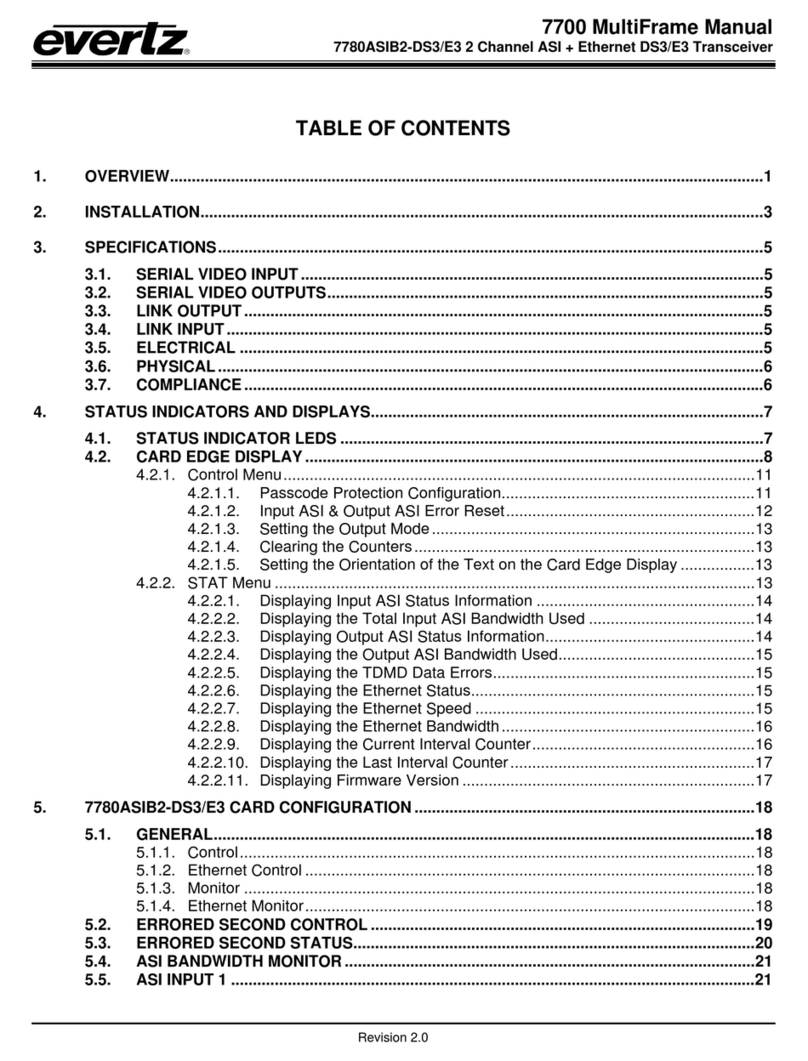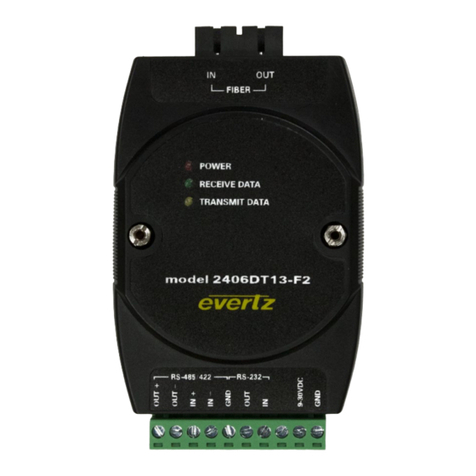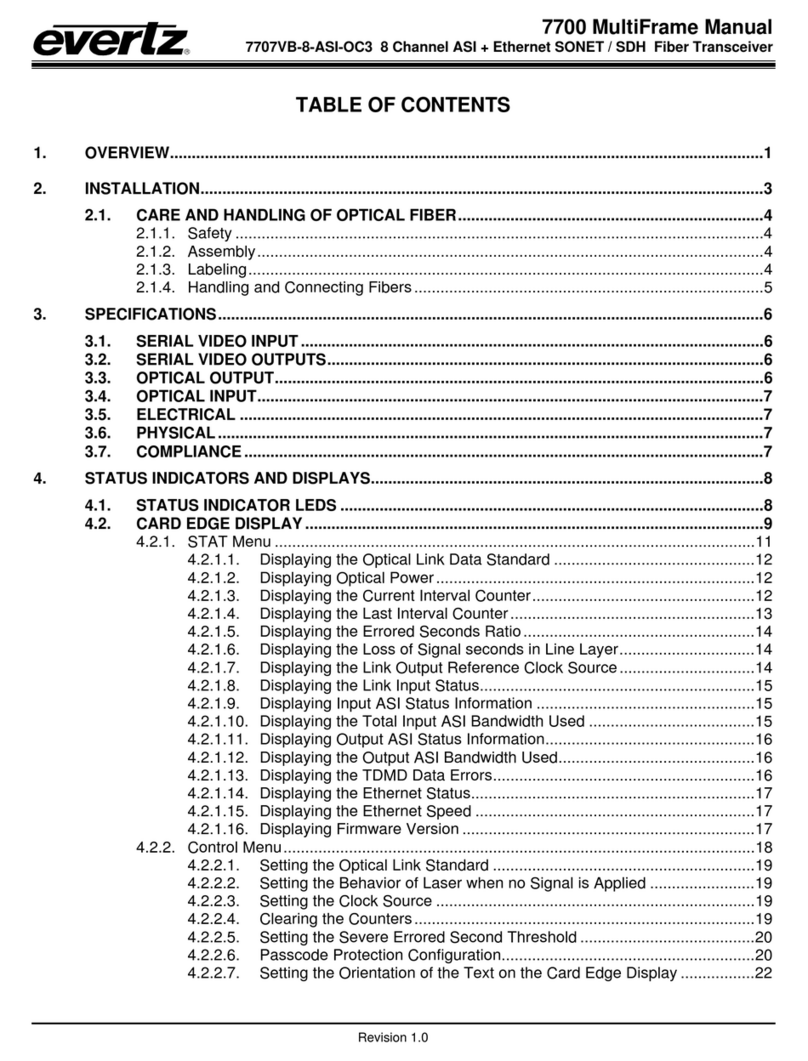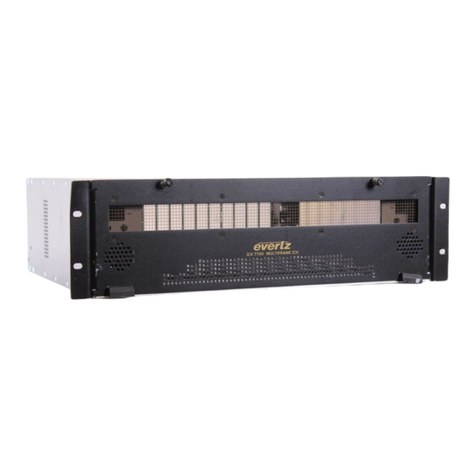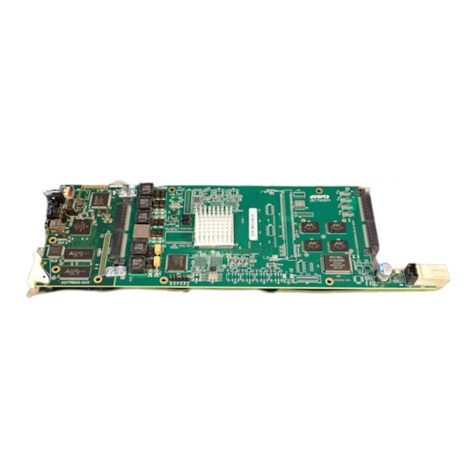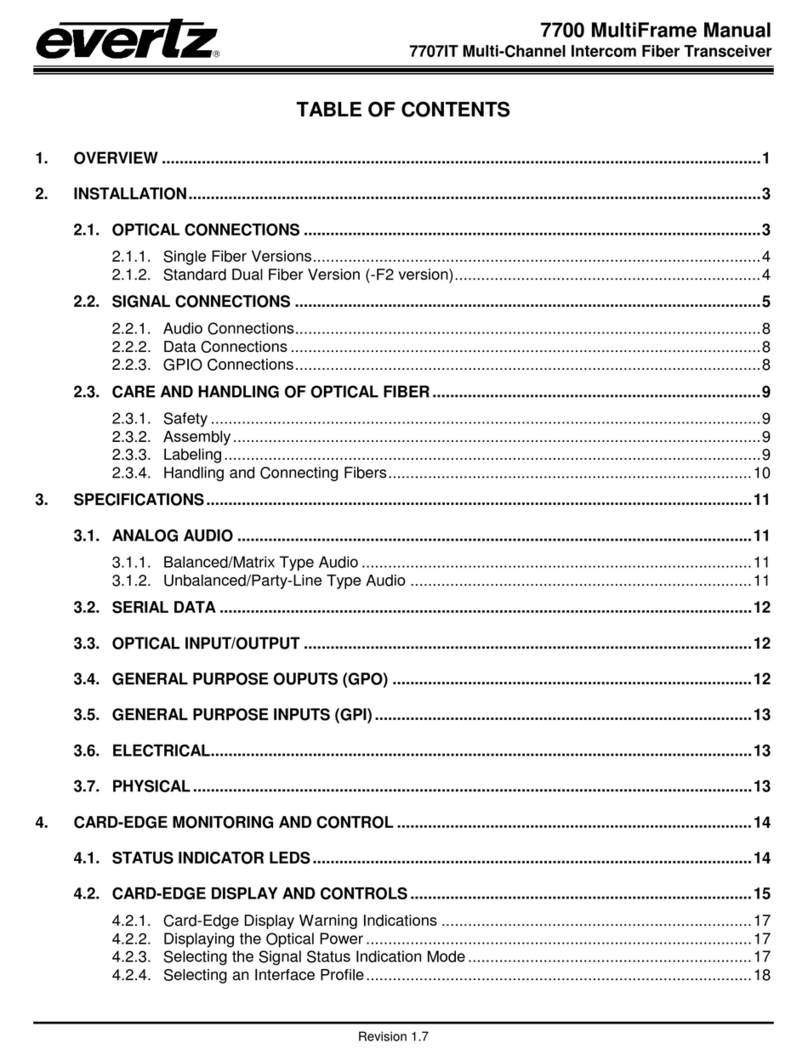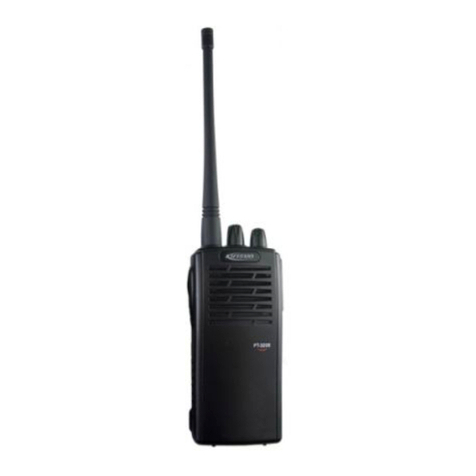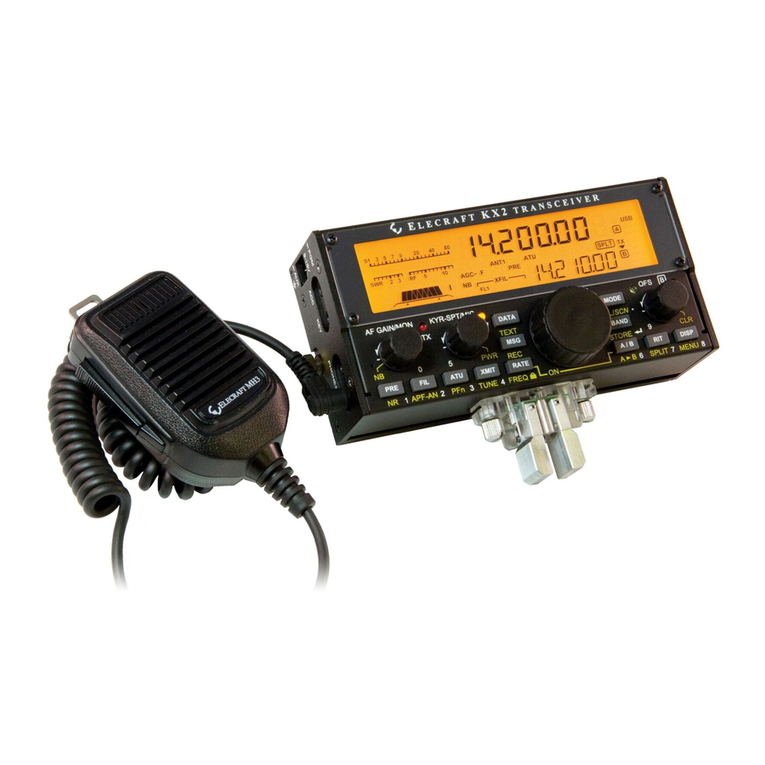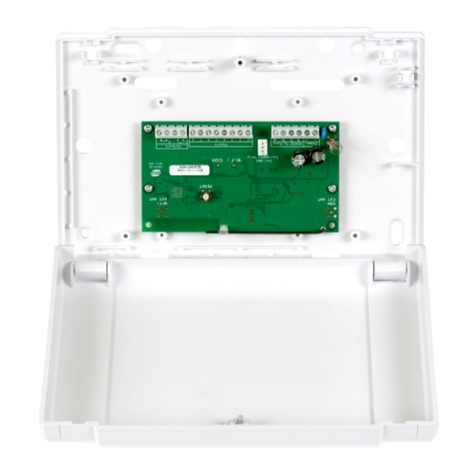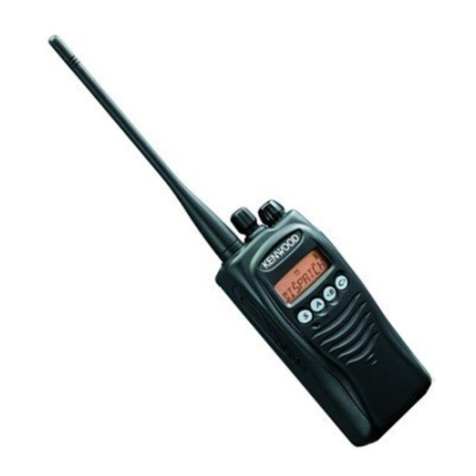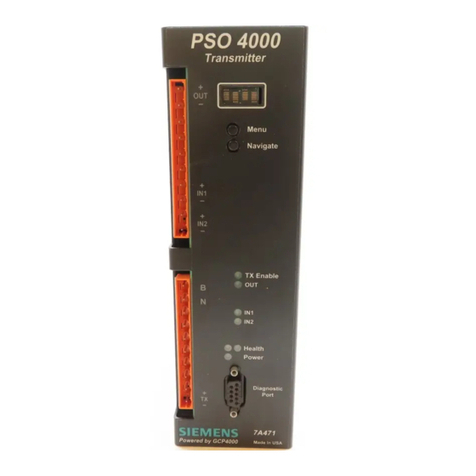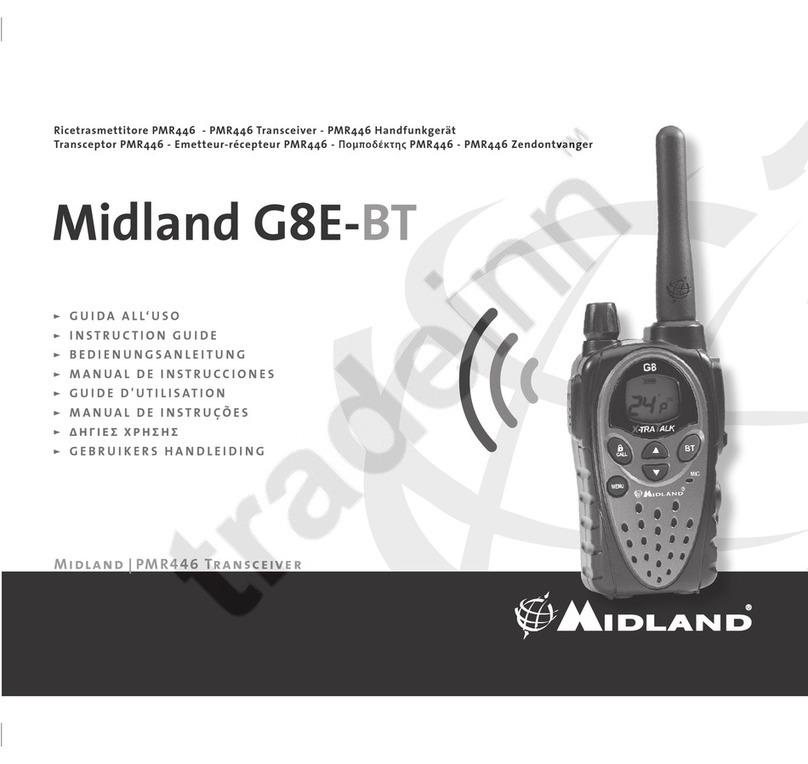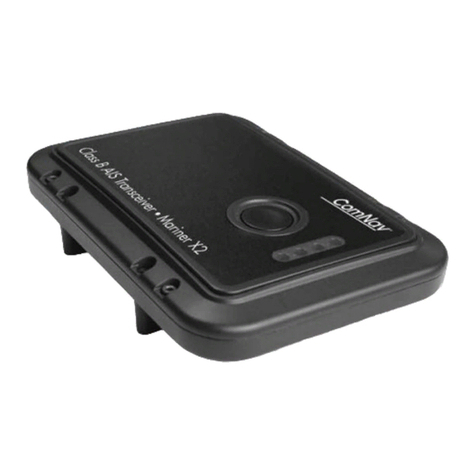
7700 MultiFrame Manual
7707GPS-DT GPS Fiber Data Transceiver
Revision 1.1
TABLE OF CONTENTS
1. OVERVIEW.......................................................................................................................................... 1
2. INSTALLATION................................................................................................................................... 2
2.1. OPTICAL CONNECTIONS......................................................................................................... 3
2.2. DUAL FIBER VERSION (-F2 VERSION)............................................................................................. 3
2.3. SIGNAL CONNECTIONS........................................................................................................... 3
2.4. CARE AND HANDLING OF OPTICAL FIBER............................................................................ 4
2.4.1. Safety.............................................................................................................................. 4
2.4.2. Handling and Connecting Fibers..................................................................................... 4
3. SPECIFICATIONS............................................................................................................................... 5
3.1. GPS SERIAL DATA.................................................................................................................... 5
3.2. OPTICAL INPUT/OUTPUT......................................................................................................... 5
3.3. ELECTRICAL ............................................................................................................................. 5
3.4. GPS POWER................................................................................................................................5
3.5. CONNECTING CABLES (SEE ORDERING OPTIONS)........................................................................... 5
3.6. PHYSICAL.................................................................................................................................. 5
4. CARD-EDGE MONITORING AND CONTROL ................................................................................... 6
4.1. STATUS INDICATOR LEDS....................................................................................................... 6
4.2. GPS SIGNAL SOURCE SELECTION (7707GPS-DR)....................................................................... 7
4.2.1. Combination 1 Source Selections:.................................................................................. 7
4.2.2. Combination 2 Source Selections:.................................................................................. 7
4.2.3. Combination 3 Source Selections:.................................................................................. 8
4.2.4. Combination 4 Source Selections:.................................................................................. 8
4.3. CARD-EDGE DISPLAY AND CONTROLS ................................................................................ 9
4.3.1. Displaying the Optical Power........................................................................................ 10
4.3.2. Displaying Firmware Version......................................................................................... 10
4.3.3. Card edge display orientation ....................................................................................... 10
5. JUMPER CONTROLS....................................................................................................................... 11
5.1. SELECTING WHETHER LOCAL FAULTS WILL BE MONITORED
BY THE GLOBAL FRAME STATUS ........................................................................................ 11
5.2. CONFIGURING THE MODULE FOR FIRMWARE UPGRADES.............................................. 11
